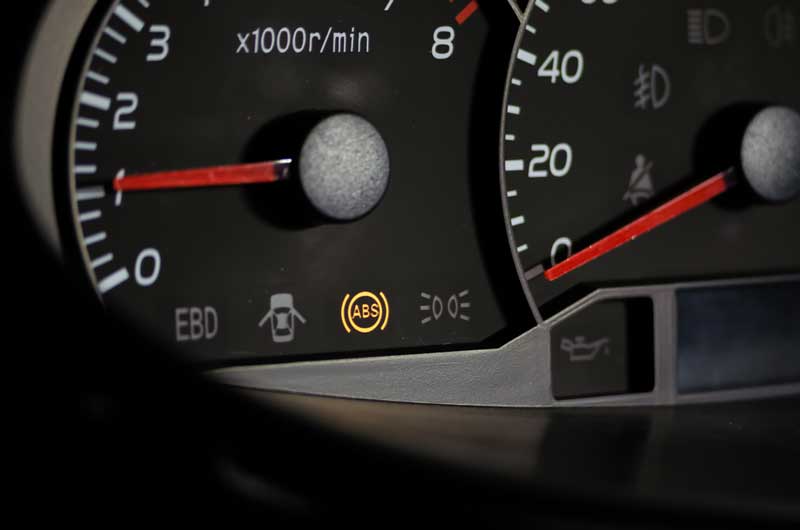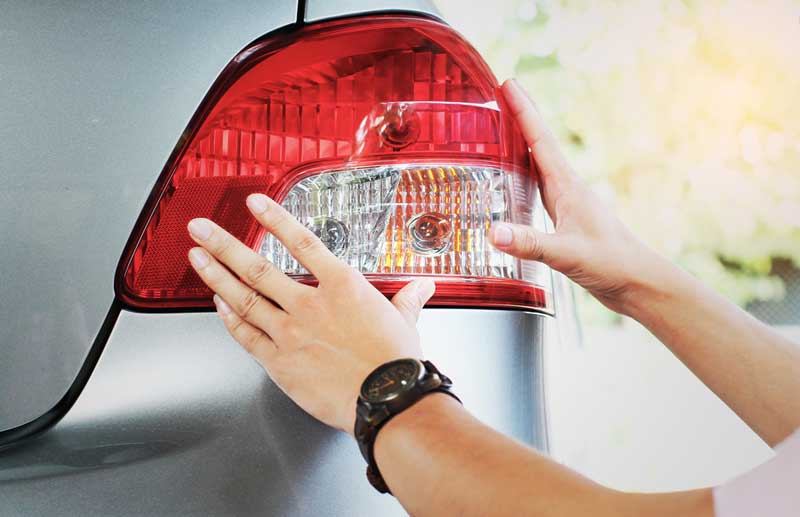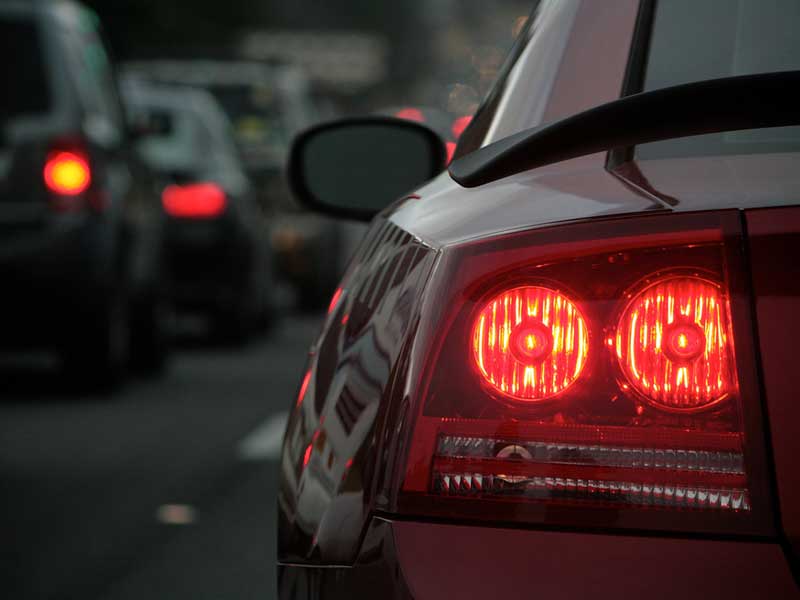Do your car brake lights stay on even after you have turned off your vehicle? why does this happen and how you can fix it?
The brakes on your vehicle are designed to prevent accidents, and the brake lights let others know that your car is slowing down. Any malfunction in this system could be disastrous.
Your brake lights can stay on when you have a faulty brake light switch or sensor, a defective brake pedal spring, a malfunctioning electrical system, wrong light bulbs installed, or perhaps your brake pedal is stuck.
In this article, we’ll provide you with all you need to know about why your brake lights stay on, and how this issue can be fixed.
Let’s get started!
Why Do the Brake Lights Stay on?
A malfunctioning brake light switch or sensor is the most common reason the brake lights stay on. However, it might also be brought about by a fault in your electrical system or a malfunctioning brake pedal. If you made a recent replacement of your rear lights when this occurred, the light bulbs you installed were probably the wrong ones.
The reason your brake lights are stuck is most likely one of the problems mentioned above. So let’s take a closer look at these faulty brake light symptoms.
Why Brake Lights Stay On
We’ve established the primary reason why your brake light stays on, however, there could be other causes. Let’s see a number of them.
1. Malfunctioning Brake Light Switch or Sensor
A bad brake light sensor is the most common reason the brake lights stay on. When the brake system’s switch isn’t working properly, the lights won’t turn off.
When the brake pedal is down or up, the brake lights are informed by the sensors and switches in the braking system. If either one is faulty, the brake lights get the wrong signal.
Your brake pedal switch can be found close to your brake pedal and can be adjusted frequently.

2. Brake Pedal Spring is Defective
There’s a spring located in your brake pedal, that lets it return to its initial position after it has been released. Unfortunately, this spring becomes weak when it gets old.
Your brake lights will stay on if the pedal does not return to its original position due to a faulty brake pedal spring. The brake pads will also remain engaged, leading to additional rotor and pad wear.
Also Read: Wheel Alignment Cost
3. Stuck Brake Pedal
An even worse issue than a faulty brake pedal spring is the brake pedal itself being defective. The brake lights will not go off if the pedal cannot come up when it goes down to the floor.
If the brake pedal doesn’t return to its initial position, the switch will not close, and your brake lights will no longer work. Otherwise, it will continue to seem like you are continuously applying your car brakes.
4. Malfunctioning Electrical System
A defect in your electrical system can affect various components, including your brake lights. This can make the lights not go off, prevent them from coming on, or make them operate sporadically.
This is likely the most complex issue to troubleshoot, so it should not be considered until all other possible causes have been eliminated.
5. Installation of Wrong Light bulbs
Although this isn’t a very common case, it is possible if your brake or tail lights were recently replaced.
A vehicle has two distinct light bulbs. One of these has one circuit while the other has two. If a light bulb with one circuit is installed in a socket designed for two, it may lead to an electrical short circuit, causing the lights to be illuminated.
Check if the socket has one circuit or two, then check your light bulb. If the wrong light bulbs were installed, they should be replaced.
How to Repair Brake Lights that Stay On
Inspect the Brake Light Switch for Damage
Always ensure the battery is disconnected before any work is done on your car’s electrical system. This can be done by slipping off the cable and tucking it beside the battery. The battery’s negative terminal should then be located and disconnected.
The nut that secures your battery terminal to the ground wire, can be loosened using a socket or hand wrench. You must wear eye protection when locating the pedal switch, disconnecting your wiring pigtail, and checking for defects. Remember to ensure that the light switch is functioning properly, by testing the switch’s return.
Change Blown Fuses
To determine where the fuse box, which has blown a fuse needing replacement can be found, whether the one beneath the car hood or by the driver’s side of your vehicle’s cabin, consult your vehicle’s owner’s manual for directions.
Depending on the model and make of your vehicle, parts of your interior trim may need to be removed to gain access to your fuse box. You might also need to check different fuses, for the brake light. You could check for steps and diagrams on the car manufacturer’s website if your service manual is not available.
Fix a New Brake Light Switch
The brake light switch, close to your brake pedal is a two-way mechanism usually marked. It completes your car’s electrical system’s brake light circuit, and if it is found faulty, it should be replaced.
Before you remove your brake light switch, make sure you disconnect your pigtail harness and keep it somewhere safe, because you will still use the harness later. Your brake switch should also be removed from your brake pedal linkage.
Do not get rid of your mounting hardware, because you will still need to use it to install a new light switch. If your harness release gets accidentally broken, the electric tape can be used to hold down the pigtail when reassembling.
Ensure Your Brake Pedal Bumper Is Functional
The brake light switch will be activated by a damaged brake pedal bumper at the top of your pedal assembly. This will also happen when a bumper is missing. To confirm that this is the reason your lights aren’t going off, inspect the floorboard under the brake pedal for yellowish or bluish rubber crumbles.
If these crumbs are spotted, it implies that your bumper has deteriorated due to age and heat, verifying that this is the source of your problem. Missing bumpers should be replaced with newly purchased ones as quickly as possible, so your brake circuit can be closed.
Change Any Burnt-Out Bulbs
Burnt-out bulbs are a very common cause of issues with the brake light. Constantly pumping the brake while you are driving, and attrition can affect the brake lights. There are two possible outcomes when this occurs – your brake lights will either get stuck or stop working.
If you experience a similar issue, and your vehicle is of an older make or model, you would have to replace the bulbs of the brake lights a little more frequently, because these vehicles still have the traditional bulbs, compared to the more recent one’s vehicles that use LED lights.
Furthermore, American car owners need to check if they need to replace their turn signals because their brake light circuits have blinkers.

Remove the Car Battery
Your battery will start draining if your car’s brake light isn’t working or gets stuck. This can be temporarily fixed by detaching the battery while the car is turned off, whenever you experience this issue.
This temporarily resolves your stuck brake light and saves battery power, so that you can ignite your vehicle until you rectify the issue. Ensure the hood latch isn’t electric, before disconnecting the battery’s negative terminal. You need to check your brakes immediately if the brake lights stay on even after your ignition is turned off.
Maintain A Dirt-Free Brake Pedal
If you have a stuck brake pedal or the pedal doesn’t close the switch, it could also cause the brake lights to get stuck or stay on. This could result from debris/corrosion or a faulty rubber stopper, between your brake pedal and switch.
This can be prevented by, ensuring the brake pedal is corrosion-free and clean. Professional upkeep and servicing will probably resolve the issue if cleaning the brake pedal still doesn’t fix it.
Be Sure that the Brake Pedal Pushes the Switch Properly
Sometimes, an electrical fault may not cause stuck brake lights. For example, your brake switch or pedal may not be properly aligned, resulting in a stuck brake light. A simple solution is to check beneath the dash on top of your brake pedal and trace the switch from your pedal arm.
The arm is expected to be aligned with the stoplight switch, which is then pushed to turn off the brake lights. If this doesn’t happen, your brake switch should be adjusted to open the connection. If it still doesn’t work, the issue may be a defective switch, a short in the wiring of your brake circuit, or a spring that is not working.
Ensure You Have Clean Brake Sockets
Your socket could go amiss due to worn wiring and dirty or corroded connections, resulting in intermittent connections and brake lights being stuck. The sockets should be cleaned out to prevent stuck brake lights. I
f cleaning the sockets of your brake lights isn’t feasible any longer, the old cables should have sniped, and a new unit should be spliced in, to replace them. The cost of the brake socket isn’t expensive, and installation is straightforward.
Don’t Short-circuit Your BCM
The Body Control Module (BCM) is connected to the brake light switch (wiring circuit), and rear brake lamps for newer cars. Turning on the brake lights, the switch uses a ground trigger for your BCM.
If there’s an issue with your BCM, it could cause your brake lights to be stuck. However, older vehicles don’t use the BCM because the switch directly transmits power to their brake lights.
Have Sufficient Brake Fluid
A low brake fluid level can affect your car’s brake light operation and braking performance. The brake fluid should thus remain within adequate levels, to ensure that the brake lights don’t act up. This can be checked by locating your brake fluid reservoir, or master cylinder on the cabin’s driver’s side.
The brake fluid level shouldn’t be lower than or exceed the minimum and maximum marks. If it does, the old fluid should be flushed out, and new brake fluid should be added to the fluid reservoir.
Release Your Parking Brake
Even though this is rare, your problem could be simply due to your parking brake being engaged. To get the brake lights unstuck, fully release your parking brake.
Since you know the possible reasons, your brake lights stay on, narrowing down the root of the problem and troubleshooting accordingly will be much easier.
Go to a Mechanic
If nothing else works, your car should be taken to your mechanic as a last resort. Even though it’s only a brake light issue, you should not take risks with your braking system.
These lights don’t only confuse other drivers on the road, but also cause the rotors or brake pads to have excessive wear. Additionally, you do not know what other issues there are, which could leave you with no brakes if these problems aren’t resolved.
Don’t gamble with your safety and the safety of other road users.
Here is a video to guide you for a quick fix.
Also Read: Brake Pad Replacement Cost
Frequently Asked Questions – Brake Lights Stay On
What causes brake lights to stay on when a car is off?
Your brake lights not going off, are most likely caused by your brake light switch being stuck closed. The plug can be disconnected from the light switch found at the pedal, to check whether the lights will turn off. Your brake light switch will need to be replaced if they do.
Will brake lights drain the battery?
The brake lights being stuck on will drain your battery. If your brake light switch is closed, it’s the most probable reason your brake lights aren’t going off. You can disconnect the switch to check if the brake lights will go off.
Why won’t my tail lights turn off?
Depending on your vehicle’s type, there are a few reasons why your tail lights may remain on even after the car is turned off. These include a defective trailer light plug, a damaged wiring harness, a faulty brake light switch stopper, or a bad brake light switch.
How much does it cost to fix a brake light switch?
The general cost of replacing a brake light switch is between $30 and $75, depending on your vehicle model and make. Fixing your light switch at a repair shop will cost an extra $80.
Where is the brake light switch located?
Most cars have their brake light switch installed just above their brake pedal. There is a two-way or one-way electric switch inside it.
Can a faulty brake switch drain battery?
Your brake light switch having internal shorts could result in your brake light staying illuminated, even though your pedal isn’t pressed. Due to this, your brake lights will burn out much sooner than they’re supposed to, thus creating a parasitic battery drain.
Is it easy to replace a brake light switch?
Fortunately, this repair is very simple and stress-free. The brake light switch can be near your right foot’s tip, close to your brake pedal. Hence it is easy to access. Furthermore, the light switch could be correctly adjusted without using any tools. The cost of labor to do this in most cars should be about $20 to 50.
Conclusion – Brake Lights Stay On
Next time someone asks you, “Why aren’t my brake lights going off?” you should now be able to help them know what and where to inspect.
This knowledge will not only keep you from spending hundreds of dollars on professional servicing but also help you avoid huge fines or even being cited because you don’t have properly functioning brake lights.
Most essentially, you will reduce the chances of getting involved in a road accident or causing one.

